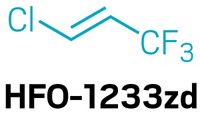Advertisement
Grab your lab coat. Let's get started
Welcome!
Welcome!
Create an account below to get 6 C&EN articles per month, receive newsletters and more - all free.
It seems this is your first time logging in online. Please enter the following information to continue.
As an ACS member you automatically get access to this site. All we need is few more details to create your reading experience.
Not you? Sign in with a different account.
Not you? Sign in with a different account.
ERROR 1
ERROR 1
ERROR 2
ERROR 2
ERROR 2
ERROR 2
ERROR 2
Password and Confirm password must match.
If you have an ACS member number, please enter it here so we can link this account to your membership. (optional)
ERROR 2
ACS values your privacy. By submitting your information, you are gaining access to C&EN and subscribing to our weekly newsletter. We use the information you provide to make your reading experience better, and we will never sell your data to third party members.
Greenhouse Gases
New Greenhouse Gas Threat Seen
Emissions: Manufacturers in China, India may stop destroying potent fluorochemical
by Melody M. Bomgardner
July 1, 2013
| A version of this story appeared in
Volume 91, Issue 26

Companies in China and India that make the refrigerant hydrochlorofluorocarbon-22 (HCFC-22) may stop capturing and destroying a by-product gas with potent greenhouse effects, now that a profitable carbon credit trading system has ended. Unless the firms are required to destroy the by-product trifluoromethane (HFC-23), an activist group warns, there will be a “climate bomb” of additional releases of this greenhouse gas.
The greenhouse effect of HFC-23 is 11,700 times that of CO2, according to a conservative estimate by the United Nations. Under the 1997 Kyoto protocol, registered manufacturers in developing countries installed equipment to destroy HFC-23 and earned huge numbers of carbon emission reduction credits. The credits were sold in markets such as the European Union Emissions Trading System. The gas cost very little to destroy, and sale of credits brought billions of dollars to companies in China and India.
The Environmental Investigation Agency (EIA) and other activist groups alleged manipulation of the credit program by HCFC-22 makers in 2010. As a result, carbon markets recently stopped accepting credits for HFC-23 destruction. Now that it’s not profitable to capture the gas, according to EIA, “Many former [credit-earning] Chinese and Indian plants may begin venting rather than destroying HFC-23 in the coming months, if they have not started already.”
Those emissions would add to releases from companies that are not part of the credit program. In the U.S. and Europe, firms such as DuPont, Honeywell, and Arkema that make HCFC-22 have long destroyed their waste HFC-23. Arkema, which runs one of the Chinese plants that had earned carbon credits, says it will nonetheless continue to destroy HFC-23. Navin Fluorine, a major Indian manufacturer that earned carbon credits, has not announced its postcredit plans.
HCFC-22 is used as a refrigerant, as a blowing agent, and as a raw material for polymers such as polytetrafluoroethylene, commonly known as Teflon. Manufacture of HCFC-22 is being phased out in developed countries starting this year. But developing countries are not bound to the schedule. China has agreed to eliminate production of HCFCs by 2030.



Join the conversation
Contact the reporter
Submit a Letter to the Editor for publication
Engage with us on Twitter